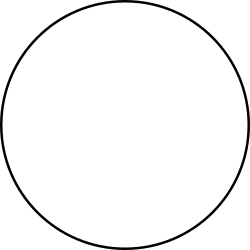Hungaria family
The Hungaria family (003[1]) is a collisional asteroid family of at least 2,966 known asteroids,[2] named for its largest member, the 11-kilometre (6.8 mi)-across asteroid 434 Hungaria. It lies within the larger dynamical group of Hungaria asteroids, a group of asteroids in the far inner asteroid belt, with semimajor axes of 1.78 to 2.00 AU. All members of the family are bright E-type asteroids with albedos of around 0.35-0.6.
An asteroid family is a group of physically-related asteroids usually created by a collision with an original larger asteroid, with the fragments continuing on similar orbits to the original. This is distinct from a dynamical group in that the members of a dynamical group only share similar orbits because of gravitational interactions with planets, which concentrate asteroids in a particular orbital range. Members of the Hungaria family are both part of the wider Hungaria dynamical group, and fragments of 434 Hungaria. The family is considered a catastrophic asteroid family because 434 Hungaria, its largest member, makes up only a fifth of the family's mass.[3]
The family has been variously estimated to be 205±45 million years,[4] 275 million years,[5] and 400±100 million years old.[6]
Large members
[edit]- 434 Hungaria: 0.0147 (18.8%)
- 1103 Sequoia: 0.00384 (4.9%)
- 3169 Ostro: 0.00157 (2.0%)
- 4031 Mueller: 0.000889 (1.1%)
- 3086 Kalbaugh: 0.000693 (0.9%)
- 1919 Clemence: 0.000579 (0.7%)
- 5390 Huichiming: 0.000519 (0.7%)
- 5427 Jensmartin: 0.000464 (0.6%)
- 4232 Aparicio: 0.000439 (0.6%)
- 5378 Ellyett: 0.000421 (0.5%)
- all other members: 0.0541 (69.2%)
| Name | Abs. Mag | Size (km) | proper a (AU) |
proper e |
proper i |
|---|---|---|---|---|---|
| 434 Hungaria | 11.24 | 11 | 1.9443 | 0.078 | 20.868 |
| 1103 Sequoia | 12.21 | 6.7 | 1.9336 | 0.083 | 20.847 |
| 3169 Ostro | 12.86 | 4.7 | 1.8918 | 0.070 | 22.357 |
| 4031 Mueller | 13.27 | 3.9 | 1.9342 | 0.071 | 20.624 |
| 3086 Kalbaugh | 13.45 | 4.0 | 1.9358 | 0.048 | 21.800 |
| 1919 Clemence | 13.58 | 3.3 | 1.9360 | 0.075 | 20.980 |
| 5390 Huichiming | 13.66 | 3.4 | 1.9391 | 0.059 | 21.111 |
| 5427 Jensmartin | 13.74 | 3.2 | 1.9317 | 0.085 | 21.162 |
| 4232 Aparicio | 13.78 | 3.3 | 1.9362 | 0.063 | 20.608 |
| 5378 Ellyett | 13.81 | 3.0 | 1.9342 | 0.073 | 21.213 |
References
[edit]- ^ Nesvorny, D.; Broz, M.; Carruba, V. (2015). "Identification and Dynamical Properties of Asteroid Families". Asteroids IV. arXiv:1502.01628. doi:10.2458/azu_uapress_9780816532131-ch016. ISBN 978-0-8165-3213-1.
- ^ a b Nesvorný, David (14 August 2020). "Asteroids". Nesvorny HCM Asteroid Families Bundle V1.0. NASA Planetary Data System. doi:10.26033/6cg5-pt13.
- ^ Holsapple, K.A.; Housen, K.R. (December 2019). "The catastrophic disruptions of asteroids: History, features, new constraints and interpretations". Planetary and Space Science. 179: 104724. doi:10.1016/j.pss.2019.104724. Retrieved 30 July 2024.
- ^ "Asteroid Family Ages". AstDyS. Retrieved 28 July 2024.
- ^ Lucas, Michael P.; Emery, Joshua P.; MacLennan, Eric M.; Pinilla-Alonso, Noemi; Cartwright, Richard J.; Lindsay, Sean S.; Reddy, Vishnu; Sanchez, Juan A.; Thomas, Cristina A.; Lorenzi, Vania (April 2019). "Hungaria asteroid region telescopic spectral survey (HARTSS) II: Spectral homogeneity among Hungaria family asteroids". Icarus. 322: 227–250. Bibcode:2019Icar..322..227L. doi:10.1016/j.icarus.2018.12.010. Retrieved 30 July 2024.
- ^ Forgács-Dajka, E.; Sándor, Zs; Sztakovics, J. (1 January 2022). "A survey on Hungaria asteroids involved in mean motion resonances with Mars". Astronomy & Astrophysics. 657: A135. arXiv:2110.11745. doi:10.1051/0004-6361/202141719.

